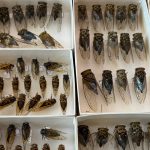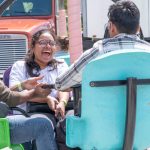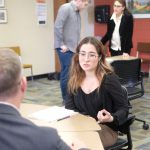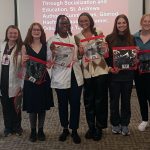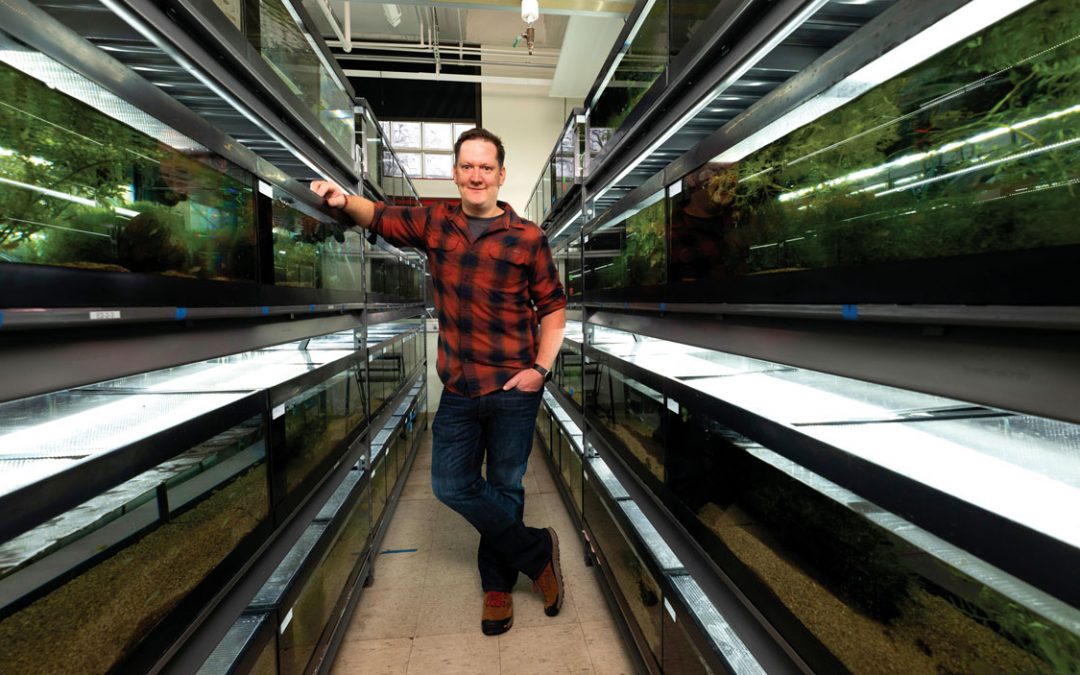
Timothy Makubuya’s research primarily focuses on physical activity and academic performance, health literacy and teacher and coach education. (Photo by Derik Holtmann)
Growing up in post-colonial Uganda in the 1990s, Timothy Makubuya didn’t have access to a school bus. To get to his primary school, where he’d sound the assembly bell every morning as a prefect, he resorted to running the 5 miles – often barefoot. Fitness continued to play a major role in his life as he went on to compete as a distance runner for the Ugandan national team and move to the U.S. to study sports medicine. On an athletic scholarship, he competed under the National Association of Intercollegiate Athletics and ran 2 hours and 50 minutes in the 2007 NAIA Outdoor Track & Field Championships in the men’s marathon. Interested in exploring how the human brain responds to exercise, his research primarily focuses on physical activity and academic performance, health literacy and teacher and coach education. In 2018, Makubuya received the Gerald and Deanna Gitner Excellence in Teaching Award, and in 2022, he received the Emerson Excellence in Teaching Award. Last fall, he was promoted to associate professor with tenure in the College of Education at UMSL.
1. Your research centers on fitness and physical education. Why do you find these topics compelling?
I was always fascinated at how euphoric I felt during and after a run. Learning about the unique performance of the human brain during and after a bout of exercise compelled me to further my studies in the teaching and learning processes of physical educators. The childhood obesity epidemic in America was also skyrocketing at the time I arrived in the U.S., which got me thinking about designing physical activity and wellness interventions. As part of my PhD research, I explored the impact that physical inactivity, poor dietary choices and poor sleep patterns had on the body composition of children in the U.S.
Additionally; the recent COVID-19 pandemic reminded us all of the importance of fitness in our daily lives, and how physical educators play a crucial role in promoting life-long participation in physical activities. Furthermore, it is also fascinating to learn from some of the brain science based research that reflects on the impact of a mere bout of exercise on learners preparing for a test or an exam. I thought, wow… this is worth further exploration! Moreover, a 2024 Forbes Health/One poll survey suggested that the number one resolution for many adults was to improve physical health. How they achieve this topic, priority is worth exploring.
2. What is the biggest issue you have noticed in American physical education?
Physical education has changed as a subject area; it was previously just regarded as “gym class,” which led to many administrators regarding it as unworthy of time and funding. This de-prioritization continues to impact physical education nationally. The notion of subject competition that values some subjects and not others, coupled with the usual lack of funding, hurts many PE programs across the U.S.
3. What do you see as the role of recreational facilities on college campuses?
These spaces are key to the improvement of student well-being, which helps improve learning outcomes. They also have the potential to improve employee wellness, as recent evidence reveals that college campus employees who participate in work-related recreation programs have lower medical expenditures and report healthier behaviors.
4. What kind of training split or regimen do you currently practice in your personal life?
Of late, I have varied my training regimen based on where I am. I love the outdoors, and I enjoy brisk walking, jogging and running. By cross- training and supplementing these activities with biking and occasional weight training, I’m able to stay on a year-long fitness routine. I attempt to meet the exercise and physical activity recommendations per the U.S. Surgeon General and the World Health Organization that require anywhere between 150 to 300 minutes per week of moderate to vigorous aerobic activity.
5. How can busy students or working professionals improve their physical health and well-being?
Everyone should really try to find 30 to 60 minutes a day for moderate to vigorous aerobic activity. Those who cannot should find creative ways to stay mobile during the week, like parking further away from your destination, and use the weekends to take a brisk walk.
It is also important to engage in mindful approaches to wellness as the body, mind and spirit are always in unison. Calming breathing exercises, brain breaks, a simple meditation or prayer could exponentially impact one’s mental faculties and improve learning or work efficiency.
This story was originally published in the spring 2024 issue of UMSL Magazine. If you have a story idea for UMSL Magazine, email magazine@umsl.edu.


